Pernille Ripp's Blog, page 62
January 8, 2016
And the Winners Are…Our Mock Caldecott Predictions 2016
It has been an incredible week diving into the world of the Caldecott with my students. Every day, we have taken time to discuss amazing picture books, vote for our favorites, and remember what reading is all about falling in love with incredible books. While I will do a more detailed post on how we did the unit later, I couldn’t wait to share our predictions as we eagerly await for the awards.
I did not have a beginning list of picture books for the students to choose from, but instead pulled all of my 2015 picture books for them to browse through. I had also searched online for buss books and then either purchased those or requested them from my library. They therefore had about 200 books to start with and yes, they said it was hard to narrow it down.
My first hour class chose….
Honor (a tie between two books):

Boats for Papa – Art and Story by Jessixa Bagley

Marilyn’s Monster – story by Michelle Knudsen, Art by Matt Phelan
Honor:
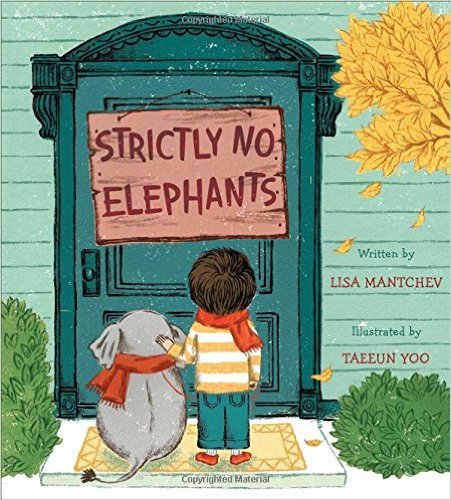
Strictly No Elephants – Story by Lisa Manchev, Art by Taeeun Yoo
Medal:
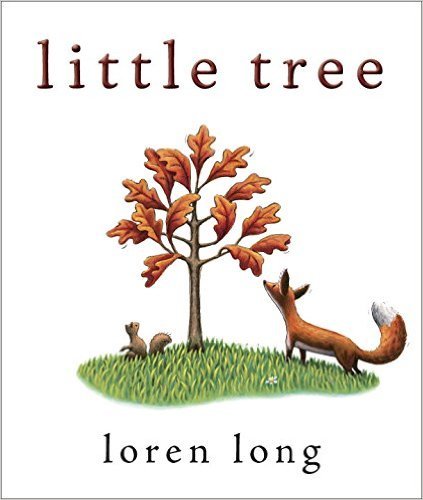
My third hour class…
Honor:
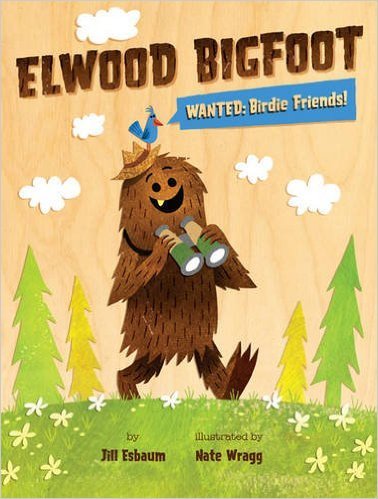
Elwood Bigfoot: Wanted Birdie Friends – Story by Jill Esbaum, Art by Nate Wragg
Honor:
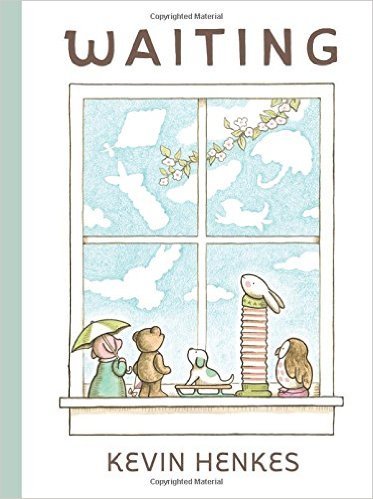
Waiting – Story and Art by Kevin Henkes
Medal:

The Night World – Story and Art by Mordicai Gerstein
My fifth hour class…
Honor:
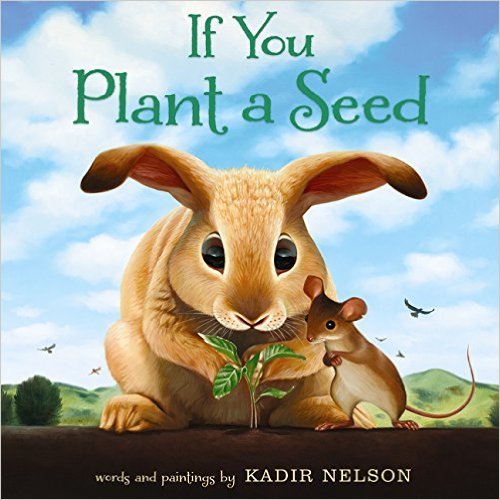
If You Plant A Seed – Story and Art by Kadir Nelson
Honor:
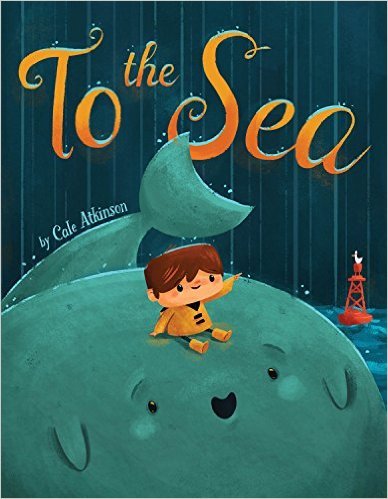
To the Sea – Story and Art by Cale Atkinson
Medal:

The Night World – Story and Art by Mordicai Gerstein
My sixth hour class…
Honor:

Growing Up Pedro – Story and Art by Matt Tavares
Honor:

If You Plant A Seed – Story and Art by Kadir Nelson
Medal:
Water is Water – Story by Miranda Paul, Art by Jason Chin
My seventh hour class…
Honor:
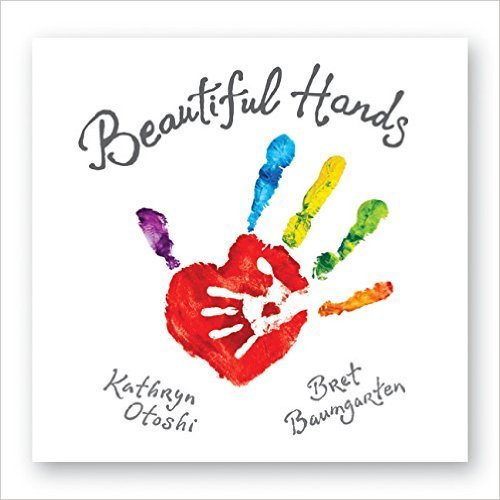
Beautiful Hands – Story by Kathryn Otoshi, Art by Bret Baumgarten
Honor:
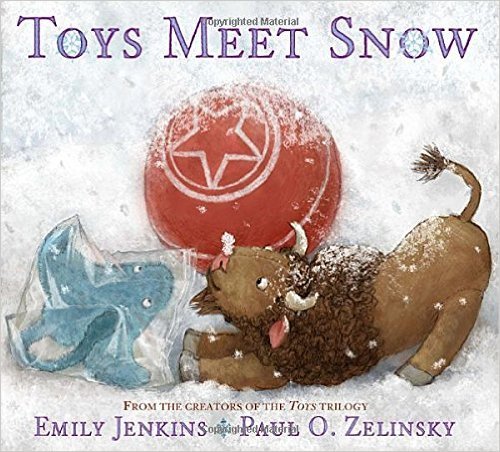
Toys Meet Snow – Story by Emily Jenkins, Art by Paul O. Zelinsky
Medal:

The Night World – Story and Art by Mordicai Gerstein
And finally, my own predictions…and since it is my blog, I get to pick more than 2 honors.
Honor:
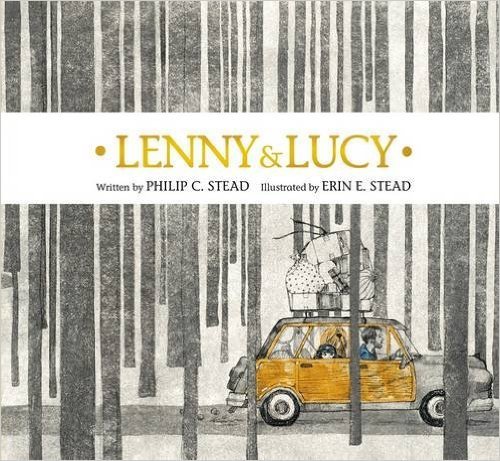
Lenny and Lucy – Story by Philip C. Stead, Art by Erin E. Stead
Honor:

Waiting – Story and Art by Kevin Henkes
Honor:
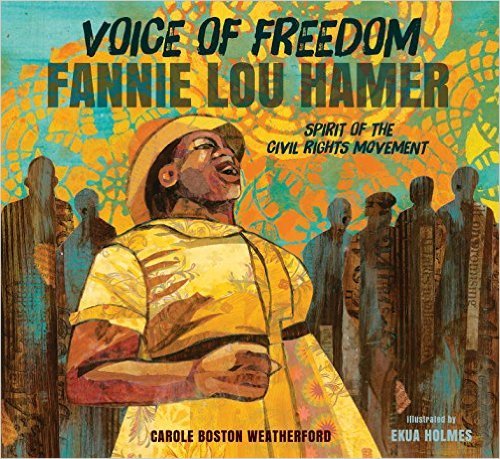
Voice of Freedom: Fannie Lou Hamer: The Spirit of the Civil Rights Movement – Story by Carole Boston Weatherford, Art by Ekua Homes
Honor:

Finding Winnie: The True Story of the World’s Most Famous Bear – Story by Lindsay Mattick, Art by Sophie Blackall
Honor:
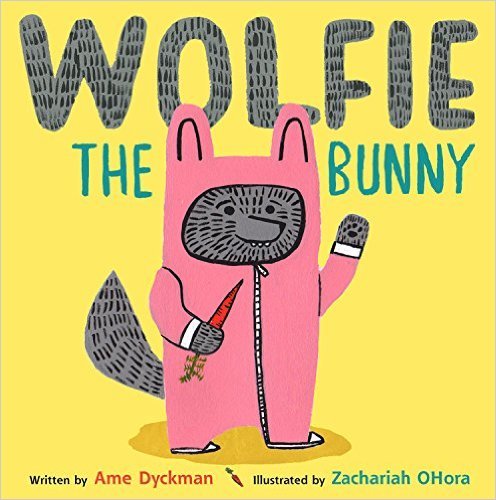
Wolfie the Bunny – Story by Ame Dyckman, Art by Zachariah OHora
Medal:

Last Stop on Market Street – Story by Matt De La Pena, Art by Christian Robinson
Filed under: being a teacher, Literacy, picture books, Reading


How Do We Best Do Literacy Interventions?
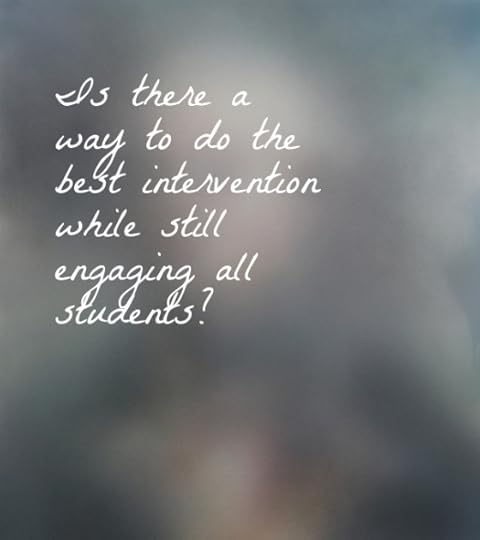
Literacy intervention has been weighing heavily on my mind this year as I vow to do a better job for all of my students. I think most of us would agree that we are willing to move heaven and earth to help students become successful, yet there are times where it seems like every great idea we have is simply not enough.
And I keep wondering; what do we first focus on; engagement or strategies? I know I always tend to lean toward student engagement first and finding a way to combine it with strategies, but I still wonder is it okay to use a program that may teach students incredible strategies to bolster their reading skills, thus making reading more accessible, even though we hear students dislike the program? Do we focus first on re-connecting students with a like or love of reading and writing and then worry about the strategies? I know that ideally the programs that we use would be a combination of both, but is that even possible? Are there intervention programs out there that students actually like? Or is it on a case by case basis?
As you can see, I have more questions than answers. I have thoughts, sure, and I know where I tend to fall; student engagement above all, but what if this isn’t enough? What if a child will never be fully engaged until they have mastered better reading strategies that can only be taught through repetitive means?
Therefore I wonder; what would the ideal literacy intervention program look like? I have seen many variations, some amazing, some not so much. I have seen an incredible combination of ideas that have worked incredibly for some students, and not so much for others. And while I doubt that there is one right answer, there has to be an overall approach that gives us a better result for many students. I am hoping with this post that you will share your ideas. Lend your thoughts.
Where do we start? Do we worry about students loving reading or writing or do we worry more about giving them the tools to master the skills needed? Is there a right way to bolster students?
If you are looking for a great book club to join to re-energize you in January, consider the Passionate Learners book club on Facebook. We kick off January 10th.
Filed under: being a student, being a teacher, Literacy, questions, Reading, Student Engagement, students choice


January 7, 2016
Why Audio Books in the Classroom?
“What should I read next?” he says, eagerly awaiting my answer.
His question takes me by surprise, after all, there is no possible way he has finished the book I downloaded for him two days ago. He has mastered the art of fake reading a few months ago.
“You’re done already? What did you think?” I ask, trying to feel out if he actually read it.
“It was so sad…at the end, when his dad came. I couldn’t believe it…” He keeps going, telling me parts of the story that makes me nod in recollection, and it dawns on me; he read it, I think. He read it, he loved it. He is proud. He is ready for another book.
“When did you find the time to read it?” I ask, still surprised.
“Last night…It got interesting so I listened to it all night. 3 hours, I think.” He says, “So what do I read next?”
This child who had not read a chapter book all year. Who has abandoned book upon book, casting aside any favorites that we could think of. Who has stuck to the same graphic novel over and over because nothing else mattered. This child, whose disengagement has made us worry late at night, whose ability to tell you exactly what you want to hear has befuddled us all. He now stands before me, beaming, waiting for the next book. He has become a child that reads.
And he is not alone. Several students this year are having incredible reading experiences, kids who have never liked reading, are begging for the next book, begging for time to listen. Yes, listen, because these students are devouring one audio-book after another. Comprehending the words without having to struggle through the decoding. Accessing stories that they have heard their friends talk about. No longer looking at the easier books while they long for something with more substance. Those children are becoming readers with the help of audio-books.
Some may say that does not count as reading, I certainly used to balk at it counting toward any reading goal, this year I am discovering otherwise. Sure, there are cognitive differences in the processes that happens when we read with our eyes versus our ears, however, the skills that we are able to utilize through the listening of an audio-book are monumental in building further reader success. And research has shown that the cognitive processes are surprisingly similar. So what has adding (and investing in audio-books) done for our students?
Provided equity in reading experience. Students who read significantly below their grade level are able to access the same texts as their peers. This matters when we create reading communities, because they no longer feel different when they book shop. Now, when they browse the books they can select any book they are interested in and we can get it for them either through Overdrive or Audible.
Supported critical thinking skills. Students can develop critical thinking skills without having to spend enormous brain power on decoding. Decoding is still taught and supported through other texts, however, they now have a text that we can practice deeper thinking with that actually has deeper meaning. Not just right text that doesn’t provide us with the complex relationships that make for such powerful stories.
Re-ignited a passion for reading. Often students who are developing readers start to hate reading. And I get it; when you are constantly in struggle mode, it can be so tiring, so having access via an audio-book lets students finally enjoy a story. They can be in the zone with the book because their brain is not occupied with the work of having to read, creating a deep immersion into the reading experience.
Provided new strategies for teaching reading. I can now pull out segments of text to use with a student knowing that they have the proper background knowledge, which is a key component when we build understanding. I do not have to reference the entire text, but instead can have them focus on the skill at hand. This therefore allows me to support their comprehension growth more efficiently.
Given us a gateway into reading with their eyes. Often times, my developing readers harbor enormous hesitancy when it comes to veering out of their known text. They are quick to dismiss, abandon and feign disinterest, all in the interest of saving face and saving them from yet another reading disappointment. However, students finding success within the audio-book world are building their courage, their stamina, and their desire to pick up print texts.
I could list more reasons; being exposed to amazing fluency, students feeling like they have relevant thoughts when it comes to discussion, building overall reading self-esteem, planting high interest books in the hands of students to see them become “the books to read,” even changing the reading dynamics within a classroom. Denise Johnson lists even more here.
In the end, I wonder whether it really matter whether having students listen to audio books is cognitively not exactly the same as when they read with their eyes? If our true goal of teaching reading is to make students fall in love with books, then audio-books are a must for our classrooms. And so is the notion that they count as real reading. No longer should we denounce or diminish the very thing that can make the biggest difference to some of our students.
That boy, who asked for another book, started listening to All American Boys yesterday. That boy who has faced discrimination, judgement, and who has tried to fit in by being an amazing kid every single day. He is now reading a book that may make a huge impact in his life. That may offer him tools if he ever were to face a similar situation. And he wouldn’t have been able to before. That book would have been so far out of his zone of proximal development that he would have been robbed of the experience for a long while yet. But not anymore, he is a reader now. And he is proudly telling everyone he meets about the books he has read.
PS: I cannot take responsibility for this idea of using audio-books, that belongs to my amazing colleague Reidun, who makes me a better teacher every day. I am thankful she had the idea and decided to share it.
PPS: If you are wondering which book he had listened to in one night, it was, of course, Orbiting Jupiter.
If you are looking for a great book club to join to re-energize you in January, consider the Passionate Learners book club on Facebook. We kick off January 10th.
Filed under: aha moment, being a teacher, books, Literacy, Reading


January 6, 2016
Our Top Picture Books of 2015
For the past 3 days, my 7th grade students have been furiously discussing the their favorite picture books as we get ready for the Caldecott awards. While we have not voted for our top 3 yet, I thought it would be worthwhile to share our all of our favorite picture books from 2015. What I love the most is the care that the students are putting into their conversations surrounding their selection, looking beyond the “What a great story!” and really searching for picture books that will leave a long lasting impression instead. Note, some of these are sadly ineligible for the award since the illustrator does not reside in the US, nor are they a citizen. So if you are looking to boost your picture book collection, start with some of these incredible books.

The Skunk – story by Mac Barnett, Art by Patrick McDonnell

Strictly No Elephants – Story by Lisa Manchev, Art by Taeeun Yoo
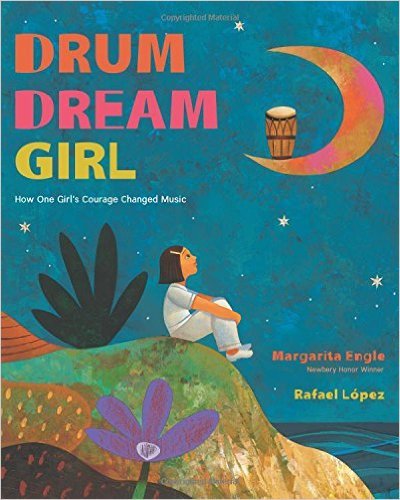 Drum Dream Girl
– Story by Margarita Engle, Art by Rafael Lopez
Drum Dream Girl
– Story by Margarita Engle, Art by Rafael Lopez
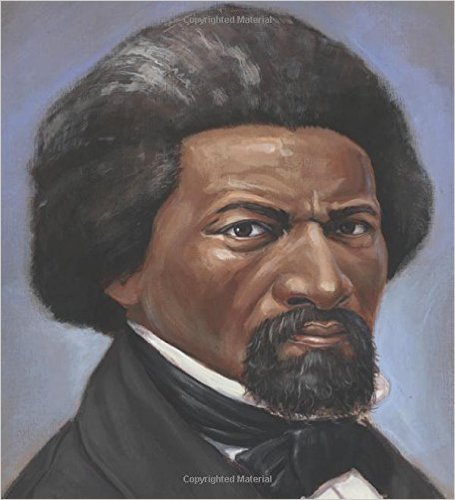
Frederick’s Journey: The Life of Frederick Douglas – Story Doreen Rappaport, Art by London Ladd
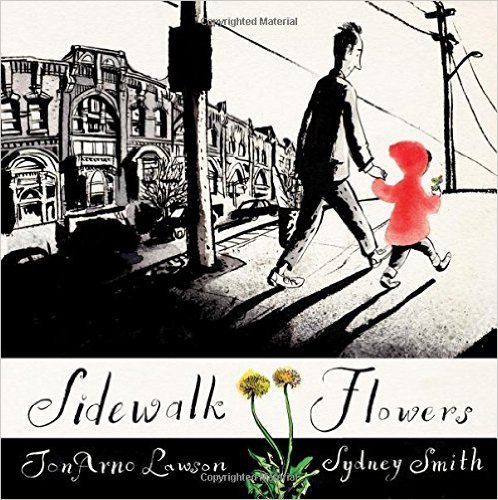
Sidewalk Flowers – Story by Jon Arno Lawson, Art by Sydney Smith
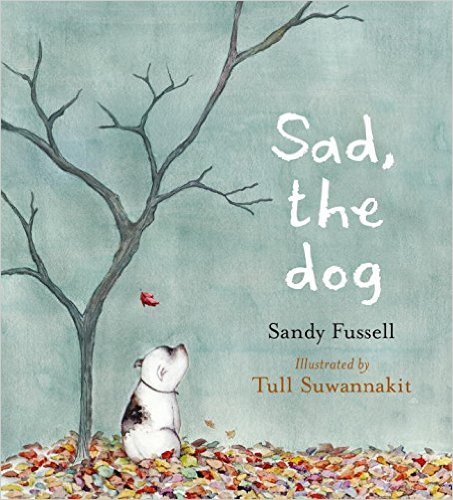
Sad, the Dog – Story by Sandy Fussell, Art by Tull Suwannakit

Marilyn’s Monster – story by Michelle Knudsen, Art by Matt Phelan

I Don’t Like Koala – Story by Sean Ferrell, Art by Charles Santoso

The Night World – Story and Art by Mordicai Gerstein

Lenny and Lucy – Story by Philip C. Stead, Art by Erin E. Stead

Waiting – Story and Art by Kevin Henkes
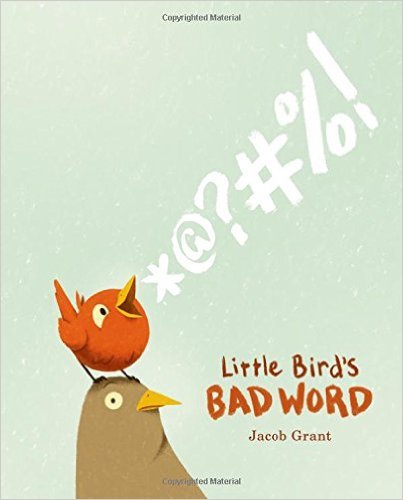
Little Bird’s Bad Word – Story and Art by Jacob Grant

I’m Trying to Love Spiders – Story and art by Bethany Barton

To the Sea – Story and Art by Cale Atkinson

Elwood Bigfoot: Wanted Birdie Friends – Story by Jill Esbaum, Art by Nate Wragg

Float – Story and Art by Daniel Miyares

The Bear Ate Your Sandwich – Story and Art by Julia Sarcone-Roach

Henry Hyena, Why Won’t You Laugh ? – Story by Doug Jantzen, Art by Jean Claude

Beautiful Hands – Story by Kathryn Otoshi, Art by Bret Baumgarten

If You Plant A Seed – Story and Art by Kadir Nelson

Pom Pom Panda Gets the Grumps – Story and Art by Sophy Henn

Growing Up Pedro – Story and Art by Matt Tavares

Voice of Freedom: Fannie Lou Hamer: The Spirit of the Civil Rights Movement – Story by Carole Boston Weatherford, Art by Ekua Homes
Water is Water – Story by Miranda Paul, Art by Jason Chin

Last Stop on Market Street – Story by Matt De La Pena, Art by Christian Robinson

Toys Meet Snow – Story by Emily Jenkins, Art by Paul O. Zelinsky

Finding Winnie: The True Story of the World’s Most Famous Bear – Story by Lindsay Mattick, Art by Sophie Blackall

The Only Child – Story and Art by Guojing
I cannot wait to see which books are in the top!
To see other favorite books in our classroom, go here
Filed under: being a teacher, books, Literacy, picture books, Reading, student choice


January 4, 2016
If You Really Want to Reward a Child

A few days ago, I sorted my own children’s toys. Cleaned out all the misfits, the broken pieces, and marveled at the bag of plastic dippity does I was able to throw away. A bag worth of trinkets, of things that meant something to them the first 5 minutes they got them, only to lie forgotten in their toy chest since. The sheer abundance startled me, after all, I consider myself a miser when it comes to toy purchases. But the proof was in the toy-chest; plastic trinkets galore. As I snuck the bag out to the trash, I couldn’t help but feel like a mean mother for getting rid of their broken “treasures.”
Turns out, I didn’t have to worry as Thea, our 7 year old, came home with a plastic yo-yo today from school. She proudly showed it to me before it broke (cheap plastic things tend to do that quickly) and told me she had earned it for reading. For reading…Because she had read every night. And I sighed, and inwardly I rolled my eyes, and then I realized that I had to get something of my chest, (imagine that)…
We need to stop cheapen the act of learning with plastic trinkets.
We need to stop teaching kids that when they learn, they earn something. That when they learn they must be rewarded with a tangible thing to play with, rather than just the satisfaction of the knowledge they have gained.
Because in our well-meaning intention of trying to help students feel accomplished, we are helping kill the love of learning itself. We are teaching kids through our treasure chests, our prize boxes (guilty as charged), that learning is not enough. That they have not gained anything until they hold a new toy in their hands. That the knowledge they have gained is not enough. That simply becoming more knowledgeable does not matter unless they have physical proof, and I shudder as I think of the long term effects that can have.
So if you really want to reward a child, hand them a pencil to write another story or solve another problem with.
If you really want to reward a child, hand them another book when they finish the first one.
If you really want to reward a child, give them more of your time as a class, give them a high five, a hug, or some sort of positive attention.
If you really want to reward a child, discuss their strengths with them, their effort, their growth, anythingt hat will make them see their own success if they do not already.
If you really want to reward a child, reach out to those at home; let them know what you see so that we can act accordingly. Let us know what you see so that we can see it too.
But as a parent I plead, from one teacher to another; please stop handing out the trinkets, the stickers, the dippity doodads, the things we find at the dollar store. Stop the paper awards and the made up rewards. Save us from the tangible, the things that break, the things that mean so little in the long run. Celebrate, yes. Acknowledge, please. But save the toys for home. The kids don’t need them, and neither do we.
If you are looking for a great book club to join to re-energize you in January, consider the Passionate Learners book club on Facebook. We kick off January 10th.
Filed under: Awards, being a teacher, being me, parents, rewards


To the Strangers that Become Friends
5 years ago I thought I was crazy. That there was no way, I could do all of the things I knew I had to do to become a better teacher. I knew that “testsandgrades” were killing my students’ curiosity. I knew that when I held a child back from recess due to unfinished homework I was tearing down all of the community building I had worked on . And yet, this is what good teachers did; they gave homework, they handed out grades, they punished and tried to make children behave with any means they could. But I knew that if that is what it meant to be a great teacher, I didn’t want to teach.
But instead of quitting, I turned to Twitter. To all of those people I admired that seemed to have it all figured out. Because I felt so alone, so isolated, because no one else seemed to think that what I was doing was the right thing to do. I felt like a fraud, like someone was going to walk into my classroom and tell me how much I was damaging these kids with my crazy ideas. But the thing about Twitter, or being connected, is that you realize that you are not alone. That there are others out there who have had the same ideas as you, that have blazed a trail for you to follow. That these random strangers can become the inspiration that you need to be better, can become a friend, even if you never met. That in their fight, you can find strength.
Yesterday the education world lost a warrior. A true trailblazer who in his sharing and speaking up gave me the courage and the guts to make my teaching better. My friend, Joe Bower, passed away, leaving his two young children, his wife, and a global network of teachers stunned at his sudden passing.
And so I write this post in tribute to the strangers that become friends. To all the teachers that dare speak up even when it has consequences for their own lives. Who never back down when it comes to kids, even if they seemed too harsh at times. Joe taught me to fight. To speak up. To give kids a voice and never make it about me, but always about the kids. He taught me that there were always others to ask for advice from, that there was always a way to make something better even when it seemed like there wasn’t. That even if you never met, you could still matter to others.
The world lost a fighter yesterday. Many of us lost someone we admired, that we looked up to, that inspired us. But we haven’t lost his voice. His words will continue to push me and others to fight for change, to never forget what it is really about.
Joe wrote a chapter for a book called Reduced to Numbers and he starts with the line, “I am not the same teacher I used to be.” Truer words cannot be found today as I mourn his passing.
Joe, I am not the same teacher I used to be, because you gave me courage. For you and all those kids, I will keep fighting, we will keep fighting. Thank you.
Filed under: being a teacher, being me


January 2, 2016
Ideas for Working With the January Slump

We go back to school in 2 days. Last night, I entered scores, sent a parent email and planned for the week ahead. I realized that I was excited to go back, I always am, even though leaving my own children behind is bittersweet. But I also realized that I was tired, nervous about the coming week because surely the students would be just as tired, perhaps a bit unmotivated, and maybe even unhappy to be back at school. Knowing this I always treat January much as I treat September. It is chance for us to get to know one another again, to recommit to the community we have built, to laugh, and to learn and to not just think that school is one more thing we just have to get through.
So how do we work through the January slump that sometimes happens? A few ideas to help.
Bridge the past. We will start with an honest discussion of the non-fiction picture book project they handed in before break, a reflection of some sort, and then they will get their assessments back. We will take time to celebrate their accomplishments out loud but also set new goals. Because many kids did just fine, but just fine will not change the world.
Make it special. I should be doing a million things but choose to do a Mock Caldecott unit instead as we prepare for the ALA awards January 11th. We love picture books in our classroom but have drifted away from reading them because of time constraints, so this week marks a recommitment to picture books but also to critical thinking as we try to predict who the winner and the honors books will be. The other stuff will wait until after that.
Set the expectations. On the first day of school, my students discussed their community expectations and we have since then lived by them. Now is the time to refresh them because those kids I taught in September have changed a lot. So once again, I will ask them to decide how our classroom should sound, feel and look like, give them time to discuss, and give them to time recommit.
Acknowledge the energy. Too often we get upset when students are tired and yet, who can blame them? Their bodies are in vacation mode as much as ours. So instead of getting mildly upset, I will embrace it; more time for quiet, more time for reading, while also picking up the pace ever so slightly every day. And yes, I will continue to be that annoyingly positive teacher who pretends not to be tired every day because the energy of the classroom starts with us.
Try something new. January is the perfect time to start something new, whether it is just new to these students, or new to you. You know each other, you have your routines somewhat down, and the classroom could use a boost. So do something you haven’t done before this year; we will finally start blogging in the middle of January and I cannot wait, I have missed it a lot this year.
Bring others in. January is also great for cross collaboration as it allows the students to think about your class in a different way. So reach out to someone and see if they are up for doing a project together, whether it be in your school, or outside of your district. Simply having the component of others involved is an automatic energy infuser. We will be doing the 2030 Global Schools Project with the integrated literacy class at our school. (And the rest of the world).
Clean up. I took a day this break to clean our classroom. Dust the bookshelves, declutter books, wipe off the tables and take down displays. When the students arrive on Monday they will enter a fresh and inviting classroom with books eager to be read. Our rooms get as worn down as our brains, so take the time to set up it again; note, that does not mean spending tons of time on new things or new displays. Make it feel fresh again.
Protect what you hold dear. Much like I took time to clean our classroom over break, it is time to clean up our to-dos. Dust off those things you hold dear as a class and give them more time, declutter from stuff that is unneccessary and try to work it in a new way. Look at your plans and your schedule and recommit your focus on those things that matter most to your kids. A few months in is when we often get bogged down by all of the to-dos rather than the things that really matter.
Re-ignite your own passion. A deflated January can often lead to the famous February and March slump so now is your chance to surround yourself with others who want to share ideas, try new things, and lift each other up. Join something just for you. Whether it is a class you want to take, a book you want to read, or even joining an online book club like the one we are doing for Passionate Learners on Facebook; add something that will make you fall even more in love with teaching and give you new ideas to try.
I know I am not the only one thinking of how to make January successful? What are your great ideas? What will you be trying?
If you are looking for a great book club to join to re-energize you in January, consider the Passionate Learners book club on Facebook. We kick off January 10th.
Filed under: being a teacher, new year


December 31, 2015
Do Something

I have always loved December 31st, the last day of the year, our oldest daughter’s birthday. While the promise of a new year lies ahead, the old is not quite finished, not quite over and the wonder of it all hits me. Look at all that has happened in the past year. Look at all we have done.
And yet, there is so much still out there to accomplish. So many changes. So many choices to make. Because too often we sit back and wait for others to decide, we wait for others to fix, to mend, to invent, and to create. We wait for others to share their ideas because we are unsure of our own. We think to ourselves, “if only…” but the words never leave our mouths. And it’s a waste. It is a shame. It is our own fault that we wonder what change could really look like, what our ideas may become, when we choose to remain unsure. When we choose to remain silent.
So my wish for the new year is a simple one; do something. Something to make it better. Something to make it worth more. Don’t sit there and wait while others do, change the world yourself. Find your comfort zone and take a small step out.
Be the change. Be the voice. Be the person that does. I know I am going to try.
If you are looking for a great book club to join to re-energize you in January, consider the Passionate Learners book club on Facebook. We kick off January 10th.
Filed under: Be the change, being a teacher, being me, new year


December 29, 2015
The Five Tenets of Personalized Learning
Cross-posted from the Corwin Connect Blog.
I did not know what I was doing when I decided to change the way I taught. I did not know that somewhere out in the education world there was already a term floating around for some of the ideas I had for change, a term that would capture so many of my ideas in one. It was not until a few years of blogging about the changes I had made that someone left a comment on my blog suggesting I learn more about personalizing learning because it seemed like that is what I was talking about. That day, as I googled the term I realized that in my endeavor to create passionate classroom, I had indeed been personalizing learning for all of my students. I was seeing them all as individuals and trying to cater our multi-faceted classroom to fit all of their needs; personalization at its core.
Yet, now when I see all of the discussion of personalized learning, I do not really recognize the term anymore. Over time the term has become associated with technology-laden, self-paced learning, preferably on a device, with little adult teaching and much more student autonomy. While I recognize the inherent good in those components, those are not the powerful aspects of personalized learning and I worry what will happen to those that attempt to personalize learning if they think this is all it is. Because personalizing a child’s learning is so much more than a device, or even a student figuring things out by themselves. Instead it is about knowing your students so well that you can help them navigate their learning journey. That your students have ample opportunity to find out how they learn best and then implement this knowledge as they master the curriculum we have to cover. It means that every child has voice in what they do and that the teacher knows their students well enough to help them grow.
When I wrote my book, Empowered Schools, Empowered Students, as well as Passionate Learners, I kept thinking about the type of environment that I would have thrived in as a child and that my own children would thrive in now. I kept coming back to a few tenets that used to be a part of personalized learning but seems to have gotten lost in the powerful PR campaign of Personalized Learning in 2015. Those tenets are so simple that we often forget to plan for them or even consider them as we craft our curriculum.
The five tenets of personalized learning:
Student Voice.
So much of what we do is about promoting the voice of our students and yet while we ask the world to listen to what our students have to say, we often forget to listen ourselves. Therefore, for any personalized learning journey to be successful, we must start to ask the tough questions. I ask my students what they dislike about school, what they dislike about the subject I teach. I ask them when they started disliking school and why. It is not just to have students feel validated in their emotions, it is so I can work with the demons they bring into our learning environment. If a child dislikes school because they feel powerless then I can combat that dislike by giving them power back. If a child dislikes school because they find it irrelevant well then that becomes my mission for change. If we do not ask our students the tough questions, and also figure out what part we play in their disengagement, then we cannot change it, we cannot personalize. So the true journey into personalized learning begins with getting to know your students really well and then acting on the information they tell you.
Student Choice.
Choice, of course, is a must in any type of class or curriculum, and yet choice to some means chaos or that every child is doing their own thing. Choice can vary depending on the day, on the task, on the curriculum to conquer. Choice does not mean that everything needs to be a free-for-all but instead that choice is always present throughout the day. Choice starts with choice in learning environment. It is time to stop dictating where students sit in the classroom. It is time to stop dictating that all student sit while learning. Choice involves how they learn something, so for some that may mean by listening to a lecture, by working with a partner, by using technology to uncover information. Students must be exposed to many ways of learning so they can discover how to navigate all of the ways, as well as determine how they learn best. Choice also becomes in how they show mastery. I always have a laid out path for students, as well as one where they build their own. Students needs change and so their show of mastery has to change as well. Finally, there must be choice in when they show mastery. Children learn at different rates and so we must find ways within our curriculum to allow for re-application of content if a child had not mastered a standard earlier. Yes, there can be deadlines and cut-off dates, but please allow a child to circle back to a previous standard if they have grown in it.
Student Planning.
This is one of the biggest things for me when I think of personalizing learning. We cannot plan our lessons in isolation anymore, at least, not all of the time. We can certainly be the gatekeepers of where we need to end up and we can also bring our ideas to the table, but at some point, please allow for students to plan with you. It is simple yet so powerful when we discuss our learning goals and then plan together how we will reach them. I have always been inspired by the ideas that my students have brought to the table, as well as been educated on how students learn best. You do not have to do it all of the time, but take the chance and ask students how they would like to cover something, I guarantee you will be surprised at just how much wherewithal the students will have as they work through this process with you, as well as the increased engagement and buy-in simply because they crafted part of the lesson.
Student Reflection.
When I moved to 7th grade, I remember feeling the rush of the curriculum constantly. With only 45 minutes to teach, and oh so much to cover, there was no way we would ever have time to reflect; yet, I discovered the true power of reflection on the days where my lessons were met with disdain. It is easy to dismiss an eye roll or a groan, but when a majority of a classroom participates in such displays, it is our cue to stop and ask why. So reflection became a natural tool for us in 7th grade as we personalized the curriculum that we had to cover. I had to find out how my students felt they were doing. I had to find out what their path forward would be, and that started with a journal and a prompt. Sometimes rather than a written reflection we would speak; as a group, in partnerships or one on one with me. The prompts did not change much throughout the years; how are you doing, what have you learned, what are you working on now? And yet as the conversations grew, so did their understanding of what they needed and where they had to grow. Personalization to me means that a child knows how they learn best and that is not something I can tell them. I can offer them hints and I can point out things they may have missed, but at some point during our very busy days, reflection has to be done so that students can decide their own path.
Student Action.
This final piece is one that gets a lot of attention it seems because this is where personalized learning becomes a thing of beauty; when our students start to change the world. When our students make, create, and have authentic purposes. Yet, student action, to me, is an inward piece as well. Yes, I want students who have a voice in the global education debate, that is why they blog, but I also want students who know how to advocate for themselves as human beings, and as learners. I want students who can successfully navigate tricky conversations and come out feeling like their voice was heard and respected. I want students who when they see a problem, do not just think about it, they do something about it. Whether that problem is a global one or a personal one. So involving students in action, setting up situations where they can see the impact they may have, guiding them through tough conversations, becomes part of personalized learning as well. I have realized that part of my job as a teacher is to help students discover the tools they already have to help them learn best, even if they are faced with an environment that allows for little personalization. I need to help them discover what they can do to make it better for themselves and for others. I need to help them see that their words have power as well as their actions.
So if you are starting on a journey of personalized learning, keep these tenets in mind. Sure, add on the technology but do not make it the focal point. That is not the point of personalizing, however, it can enhance it. Personalizing learning is the key to keeping students engaged and curious, but it also means that there is not one system to follow. Instead, spend the time to truly discover who your students are and help them find their path. Be the teacher that made a difference, not just because you cared about them, but because you taught them how they could be better learners. Our jobs have never been just about covering curriculum and personalizing learning reminds us of that.
If you are looking for a great book club to join to re-energize you in January, consider the Passionate Learners book club on Facebook. We kick off January 10th.
Filed under: aha moment, being a teacher, MIEExpert15, Personalized Learning, student choice, Student dreams, student driven, student voice, Student-centered


December 28, 2015
10 More Picture Books to Add to Your Collection
I cannot do a best of the year book list. There are too many that I have loved. There are too many I have yet to discover. A book always gets left off and I wonder why I forgot it. So instead, I will continue my tradition of offering up some great new additions to our classroom library. I have been on a year long mission to get as many great picture books into the hands of my students, and so here is the latest batch that we have been reading aloud, discussing, using, and sharing.

When I wanted to send a picture book to Australia, I knew that I wanted to send one by Wisconsin native Pat Zietlow Miller. So I sent the book Wherever You Go. Not only does it have the best message, but I have also found that every age group I have read it to has loved it. It is a new classic in my opinion.

My school is very focused on creating an inclusive environment for all students and so I have been on a mission to include more picture books that speak to all of my students. Jacob’s New Dress by Sarah and Ian Hoffman is a book a child may need, I don’t need, but in case they, I want it to be there for them.

As my students created their own non-fiction picture books I needed strong mentor texts to show them just how amazing this genre can be. Growing Up Pedro by Matt Tavares is an incredible example of a sports focused nf picture book that does not read like a long list of facts. This is a book that will be read and used for years to come.

The same goes for the historical nf picture book Lillian’s Right to Vote by Jonah Winter and Shane W. Evans. In it we learn about the fight for voting rights for African Americans as Lillian walks up the stairs to cast her vote. Masterfully told, this one moved me to tears.

Picture books don’t usually make me cry, but this one did as I read it aloud to my own children. Eve Bunting is a master storyteller, Fly Away Home is a book I have used many times. The pairing here in Yard Sale with Lauren Castillo’s beautiful illustrations is really out of this world, and the conversations, the inferring that can happen because of this book is powerful.

Can Kadir Nelson do anything wrong? If You Plant A Seed not only has a great message for all ages, but the illustrations are breathtaking.

Groundhog’s Dilemma by Kristen Remenar and illustrated by Matt Faulkner is not just a book for Groundhog’s Day. It is a book for all ages that need to discuss what peer pressure can do to you and how to navigate friendships.

This one, Once Upon an Alphabet by Oliver Jeffers, is the reason Oliver Jeffers is a Global Read Aloud Contender for the picture book category. While perhaps hard to read aloud in one sitting, it is definitely still worth sharing with others as each little story will make you laugh or wonder. I also cannot wait to see what type of writing might be inspired by this book.

I love a narrator that speaks to their reader, it gets me every time. Snappsy the Alligator (Did Not Ask to Be in This Book) by Julie Falatko and illustrated by Tim Miller is laugh out loud funny, and yet, is bound to also lead to a great conversation about how to deal with others. How many of our students could need a little with that?

How many of us have taught students whose parents or other people they know are in jail? Visiting Day by Jacqueline Woodson once again means that we have a book that can start hard conversations. That students can find themselves in even if they do not want to share about their own experiences.
There are always more books to highlight, to share, but for now I will leave it at these 10. To see other lists of favorite books, go here, I try to share as much as possible.
Filed under: being a teacher, books, Literacy, picture books, Reading







